IS AN OLD CR500 ENGINE MEANT TO BE IN A CRF250 CHASSIS?
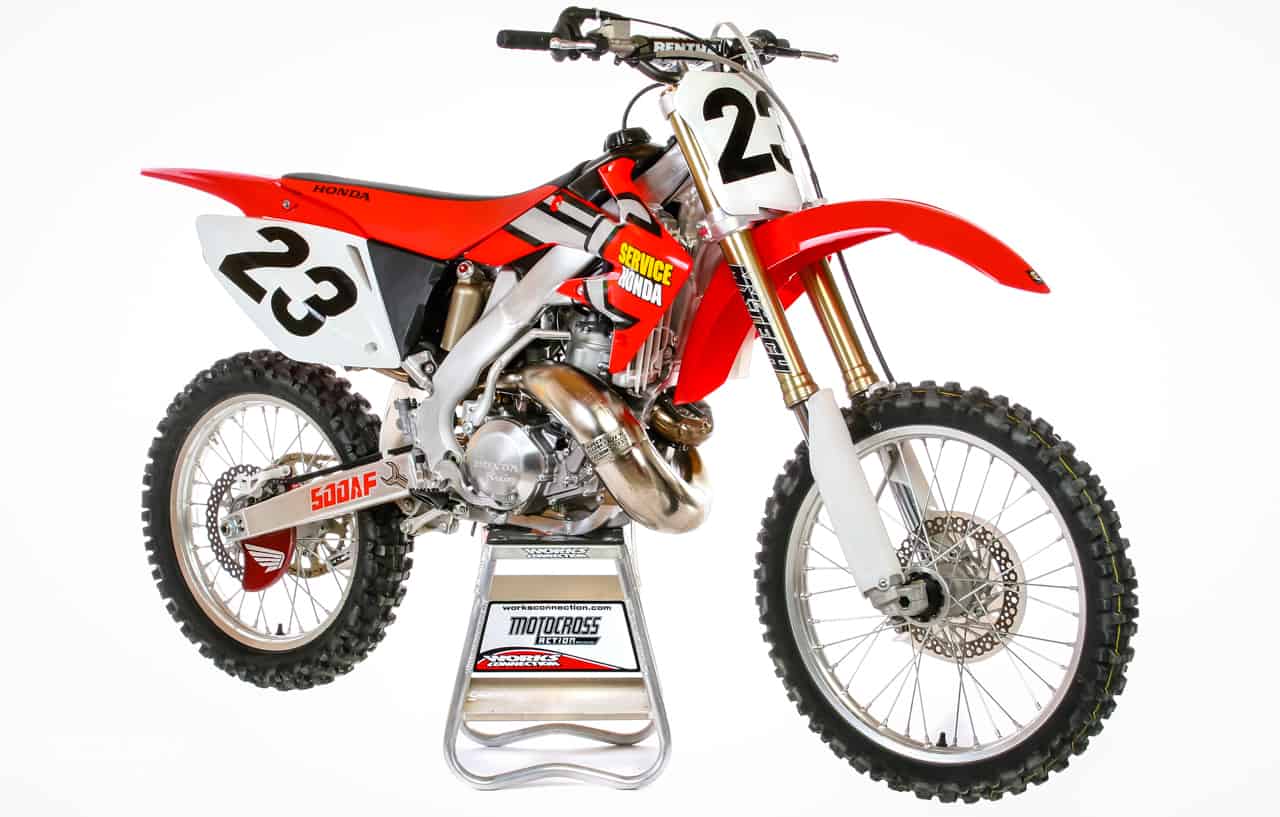 There’s something inherently cool about tasting the forbidden fruit. For most motocross racers, the fabled 500cc two-stroke had been banned from the racetracks of America long before they ever had a chance to throw a leg over one. Banished at the end of the 1993 AMA National season because it was deemed too powerful (and because Yamaha and Suzuki didn’t want the AMA to host a Championship that only Honda or Kawasaki would win), the 500cc two-stroke motocross bike withered on the vine without high-profile race support.
There’s something inherently cool about tasting the forbidden fruit. For most motocross racers, the fabled 500cc two-stroke had been banned from the racetracks of America long before they ever had a chance to throw a leg over one. Banished at the end of the 1993 AMA National season because it was deemed too powerful (and because Yamaha and Suzuki didn’t want the AMA to host a Championship that only Honda or Kawasaki would win), the 500cc two-stroke motocross bike withered on the vine without high-profile race support.
Many racers still remember what it was like to race these giants on a motocross track. There was something special about the men who could handle the explosive power of a 500cc two-stroke. Mike LaRocco, Mike Kiedrowski, Jeff Ward, Rick Johnson, David Bailey, Broc Glover, Roger DeCoster and Chuck Sun were some kind of tough.
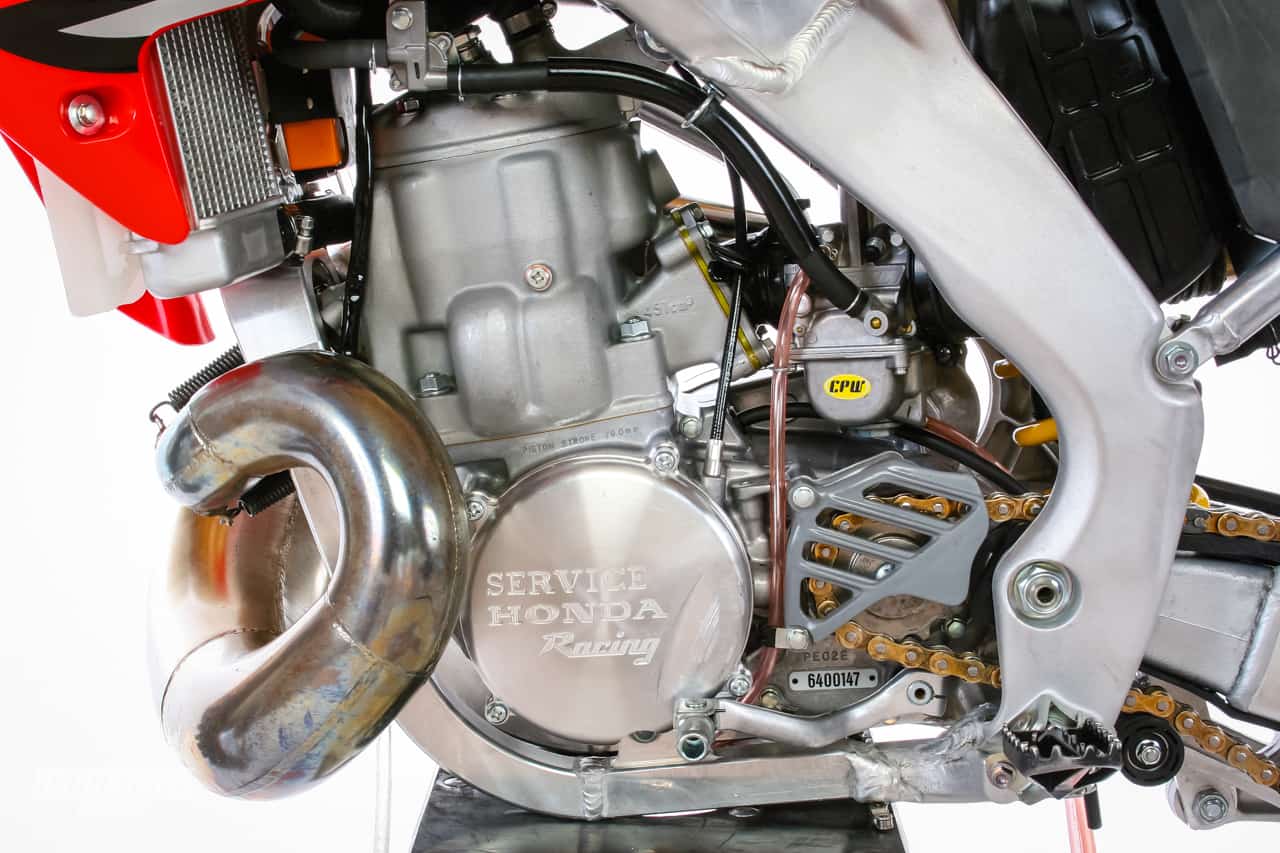
Although Honda and Kawasaki kept the CR500 and KX500 in their product lines for years after the demise of the AMA 500 Nationals, the bikes languished with minimal R&D support and little more than BNG every year. Most 500 riders shrugged and switched to a 250 two-stroke (and eventually a 450 four-stroke), but Indiana’s A.J. Waggoner had no intention of laying down his sword. In 1997 A.J. wedged his old CR500 engine into the then-new twin-spar CR250 frame. A.J. had no intention of going into the business of building aluminum-framed CR500s, but he was surprised by the strong demand for his pet project. Every year since 1997, Service Honda has upgraded and improved their home-brewed CR500AF (AF for Aluminum Frame). When Honda totally stopped production of the CR500 in 2001 (although development had actually ceased in 1991), engine parts were still made available so that Service Honda could keep the unique sound of the CR500 alive.
Most people have seen a Service Honda CR500AF, although they don’t always realize it. Most recently, Robbie Maddison used a Service Honda CR500AF when he jumped 322 feet in Las Vegas this past New Year’s Eve. Even if you didn’t see Robbie jump, you probably know someone with a Service Honda bike. The MXA wrecking crew personally knows two Glen Helen racers with the aluminum-framed 500s.
SHOP TALK: WHAT’S IT ALL ABOUT?
This Service Honda CR500AF utilizes a 2001 CR500 engine shoehorned into a 2008 Honda CRF250 chassis. The complexity of the job demands a hodgepodge of Honda parts from various CRs and CRFs for the rest of the bike. On paper, the 2008 Service Honda CR500AF may look like Frankenstein’s bike, but on the stand, it looks like it was meant to be. Almost all of the parts used to build the base CR500AF are OEM Honda parts. After all, Service Honda is one of the biggest Honda parts suppliers in the world.
Additionally, Service Honda carries a good supply of aftermarket products that they have found to work well with the CR500AF. Customers can customize their CR500AF by purchasing these upgrades, and Service Honda installs them at no additional labor fee when they build the bike. MXA’s CR500AF test bike was equipped with a few of these upgrades. The most noticeable mod was a prototype off-road ignition mapping that we felt didn’t quite have the all bugs worked out. The mapping made the bike feel choked up, and once we switched back to the stock mapping (that the CR500AF comes with standard), the bike ran fantastic. Throughout our testing, we raced the bike with both Pro Circuit and FMF pipes. While each pipe changed the power curve a bit, MXA testers didn’t feel a significant difference or advantage with either one of them. Our test bike also had Service Honda CNC-machined clutch and ignition covers and a trick looking rear brake rotor guard.
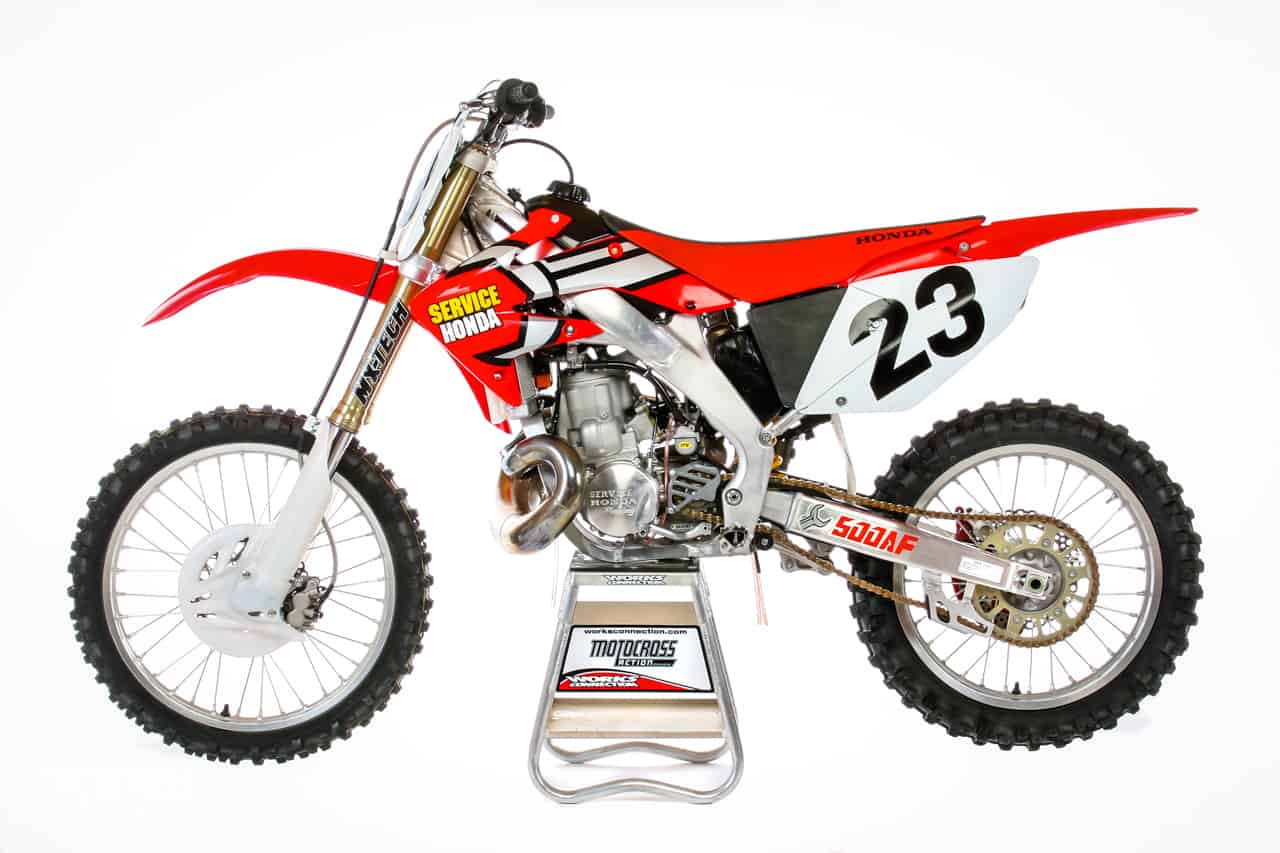
Service Honda will send the suspension out to any tuning company the customer opts for, but for our test bike we opted for the suspension to go to MX-Tech (largely because Service Honda has a relationship with them on the majority of CR500AF projects). There is no doubt that the explosive horsepower of a 500cc two-stroke put the suspension to the test. As expected, the assigned MXA test riders (chosen because they had extensive CR500 experience) struggled with the initial setup until softer settings were found.
TEST RIDE: WE DARE YOU TO PIN IT!
Riding a well-tuned 500cc two-stroke is an experience like no other. With a healthy kick from the rider’s right leg, the bike rumbles to life. While lower displacement two-strokes may occasionally be confused with weed whackers, the bark of the 500cc engine can only be a race bike. Although we often use the word “explosive” to describe the CR500’s power, in truth it is only volatile when you want it to be. On the track, it takes so few revs to produce power that a CR500AF rider could sneak up behind 450 guys, then hit the clutch and drag race them.
The 500cc power plant produces two very different ranges of power. The first is a very torquey power delivery with a reasonably usable low-end output. When ridden a gear high, the CR500AF effectively grunts around the track at a remarkable yet manageable speed. The second range of power occurs when the CR500 comes on the pipe. When it does, it is time to hang on! The CR500 doesn’t spin the wheel, it rotates the bike. This isn’t abrupt or snappy power–it is pure unadulterated horsepower. It makes the earth shake. No matter your desire, there are only a handful of riders on the planet who can ride a CR500 with the same aggression that they use with a 250 two-stroke or 450 four-stroke. This bike demands your respect–and if you don’t give it, you will find yourself looking like a wet dish rag in a couple of laps. The greatest 500cc two-stroke riders were men like David Bailey, men who weren’t afraid to turn the throttle on, but were exceptionally precise about when to twist their wrists.
As for the chassis, every MXA test riders was impressed. After nine years of building Service Honda CR500AFs, the CR500AF is far from jerry rigged. Although a bit big in the CRF250 frame, the engine looks, and more importantly feels, like it belongs in the chassis. The bike felt balanced through turns and on the straights. Where Honda’s first generation aluminum frames were rigid and transmitted tons of vibration, the new versions are perfectly suited to the tone of the big two-stroke mill. Although the CR500 engine naturally produces a lot of vibration, the CR500AF dampened it well. Experienced 500 testers felt it was the same or better than the last steel-framed CRs in terms of vibration.
For mortal men, hanging onto the CR500AF for an entire moto requires a smooth riding style and a respectful right wrist. MXA testers raced the CR500AF back to back with CRF450s and thought the power of the CRF450 felt more like the CRF250 after wrestling with the powerful 500. The more they acclimated to the CR500AF, the faster they could go and the more fun it was.
The hanging chad remains, could you win on a CR500AF? For the vast majority of modern racers, the answer is no. Four-strokes make for lazy riders. They don’t punish as quickly as a two-stroke. To win on a CR500AF, and to beat an equal rider on a CRF450, it would take a skilled rider–a technician with the throttle. If you put the CR500AF in the right hands, a CRF450 wouldn’t stand a chance. This is not a case of the machine making the man; it is about finding the perfect man for the machine.
VERDICT: WHAT DO WE THINK?
The CR500AF is a rare machine. Service Honda sells approximately 150 a year. Each bike is specialized, customized and sanitized. While the $15,000 cost is expensive, this isn’t just another bike rolling down the production line. It is a piece of history, but not vintage history. This bike rewrites the history book every time it rolls to the starting line.


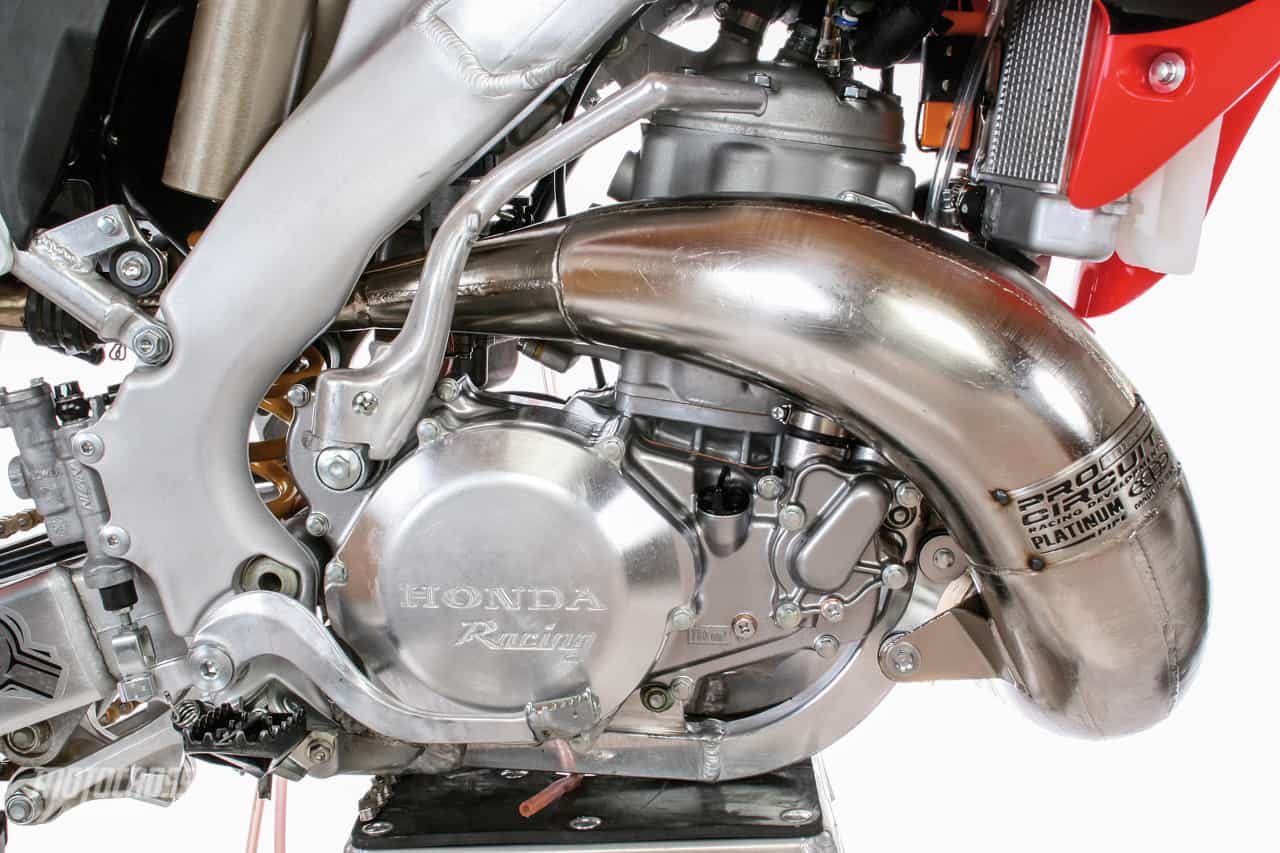
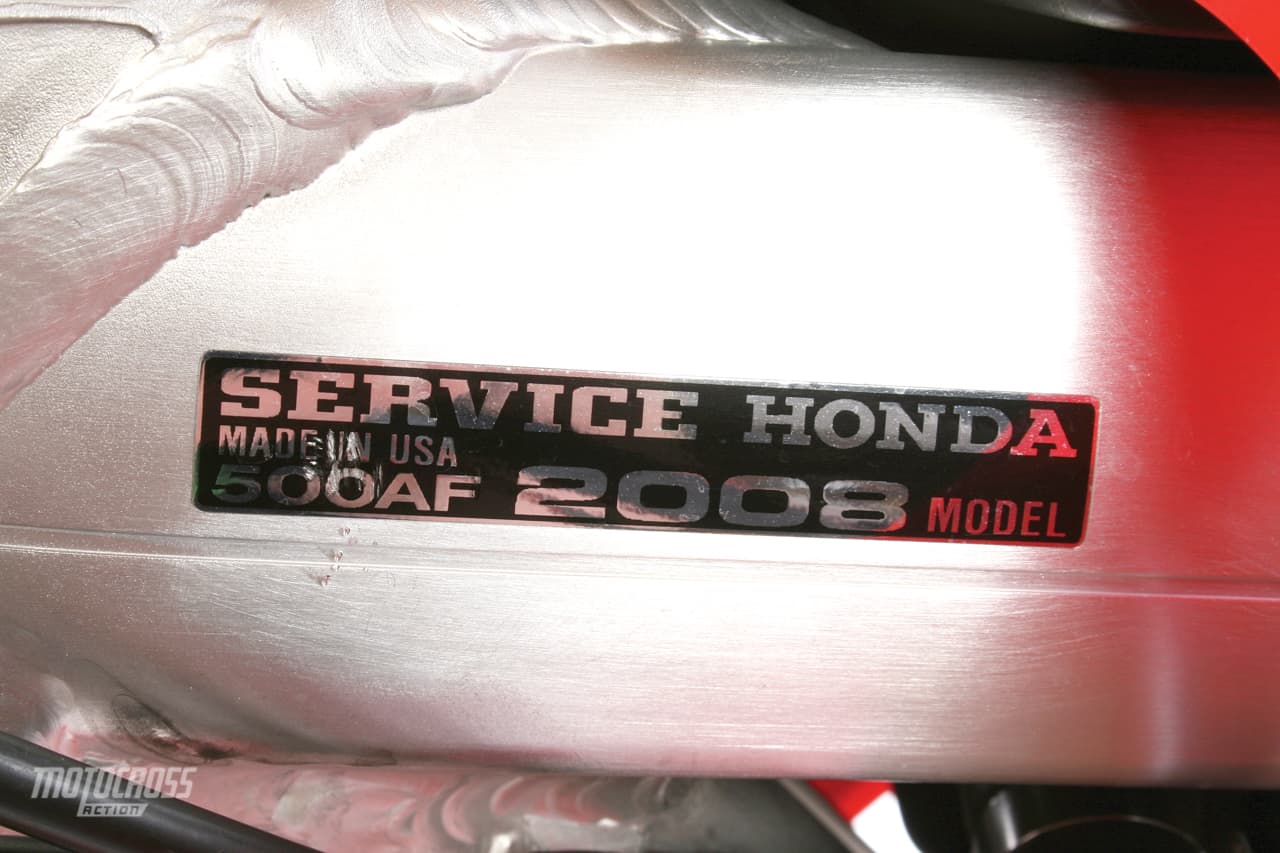
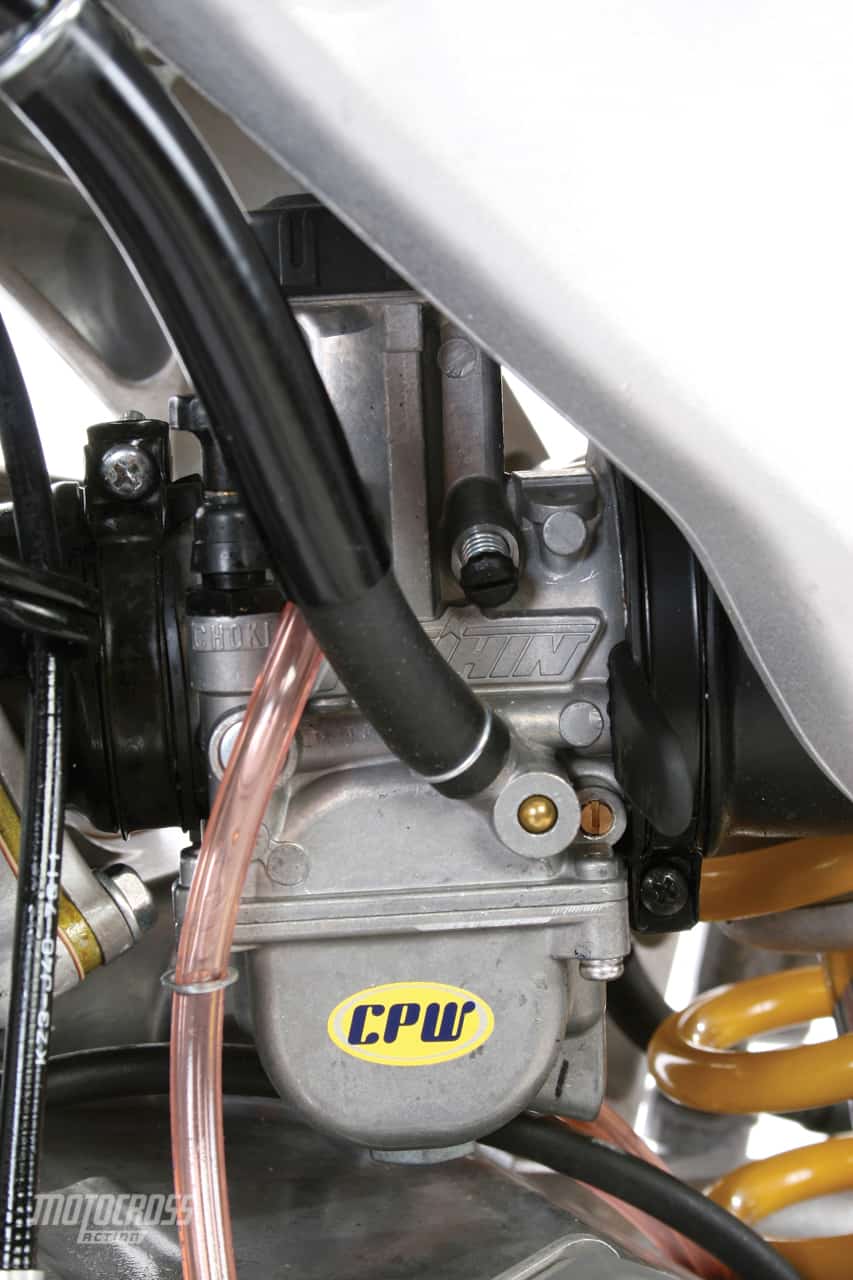
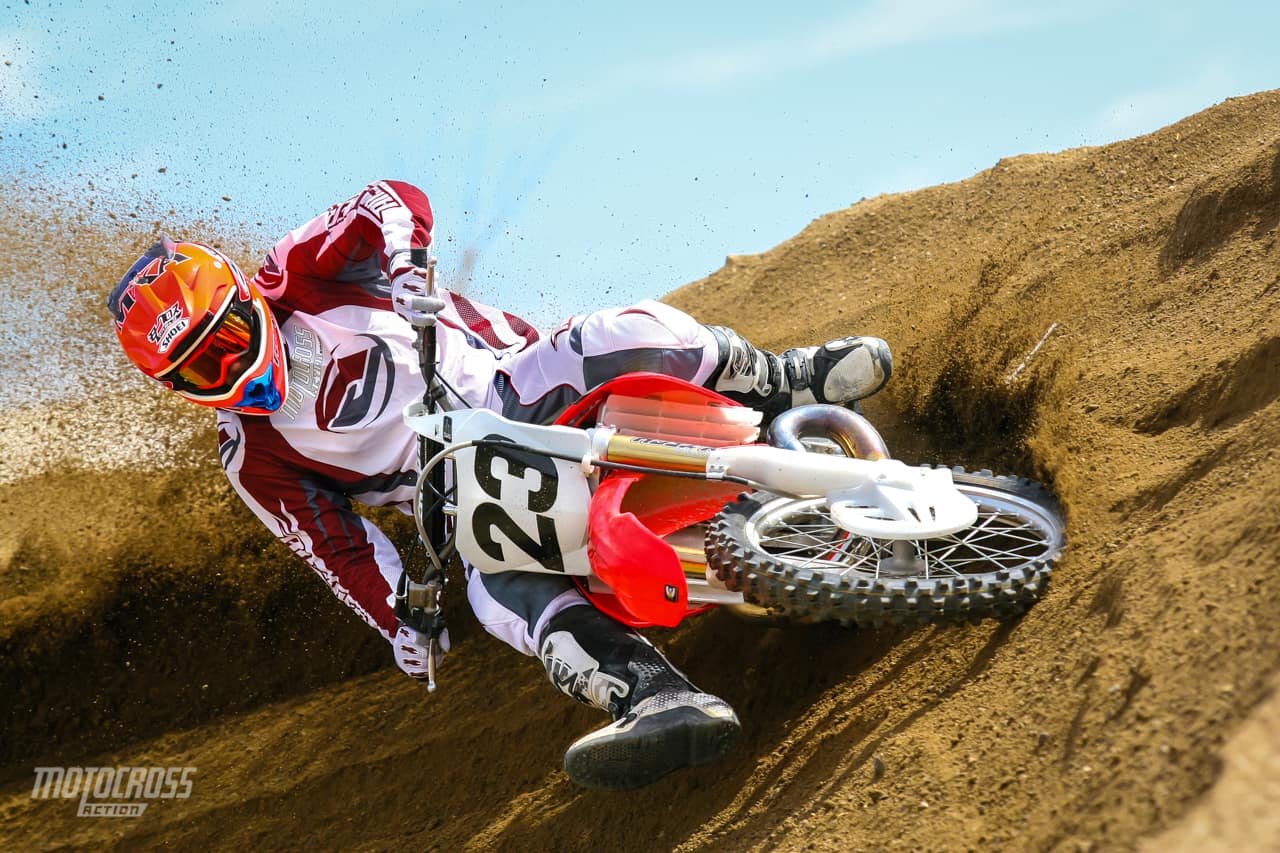



Comments are closed.